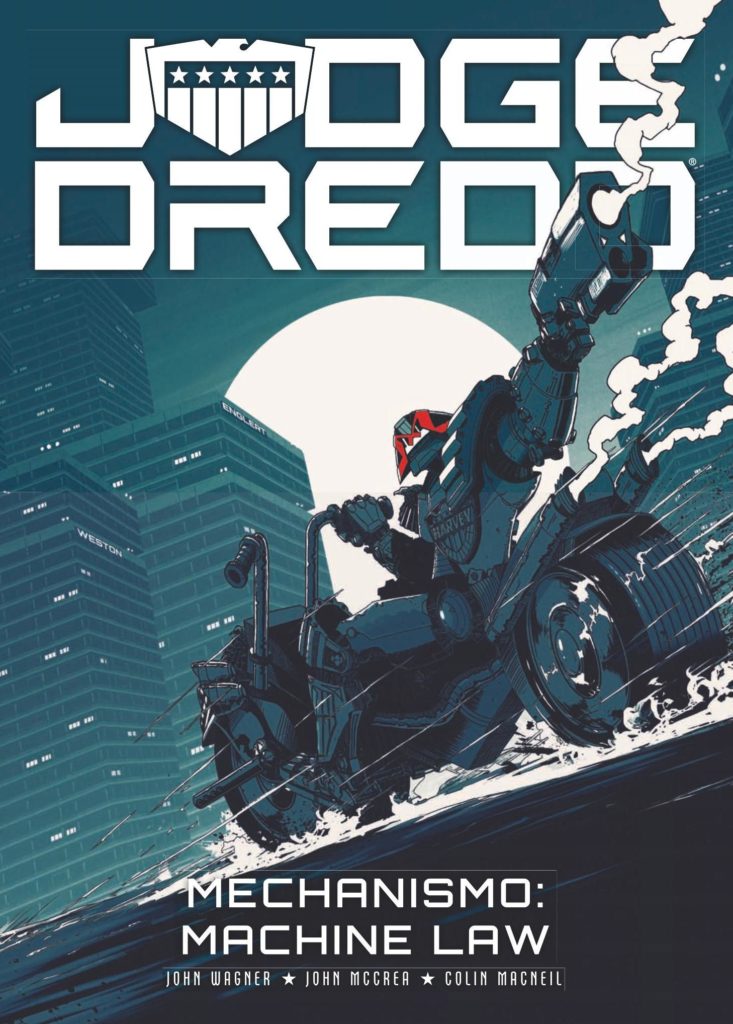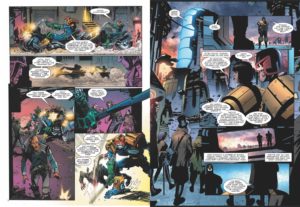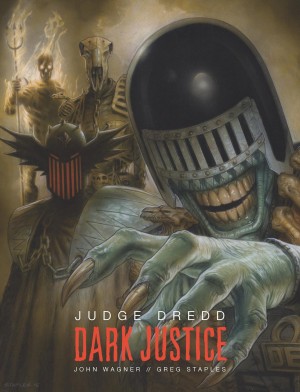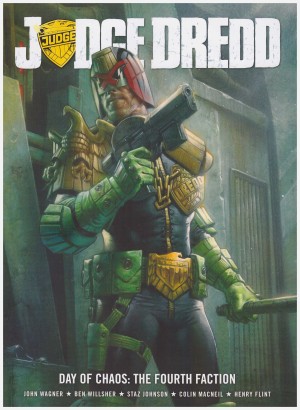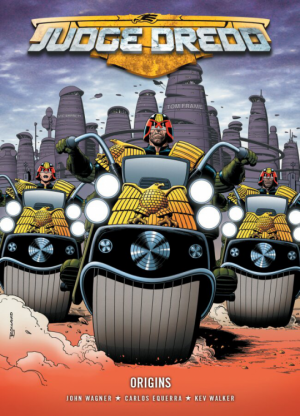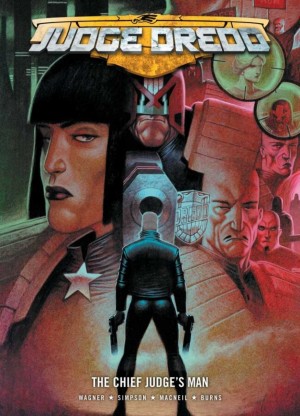Review by Karl Verhoven
The idea of robots going wrong was introduced very early in Judge Dredd’s continuity, but not fully exploited regarding Judges until the highly regarded Mechanismo story. There was a sequel, but due to malfunctioning failsafes the robot judges were mothballed. However, with Mega-City One again in crisis and Judges in short supply, new Robo-Judges are being trialled. As seen in the introductory ‘Harvey’, the usual assurances are given that this time nothing can go wrong.
Part of the delight is figuring out exactly how they will, John Wagner toying with the readers. He closes off previous methods of malfunction, and reiterates how this time the robots are programmed to have a greater empathy for the public they protect. Only Dredd has reservations, and that’s where Wagner begins the hilarity. Harvey, the responsive robot judge with a caring attitude, even for lawbreakers, is very funny, and a contrast to Dredd’s dry scepticism, but it can also switch to the slogans Wagner’s always been good at. “This hellhole is closed for crime” has significantly more weight when bellowed by a couple of tons of metal in the form of a judge. This is all illustrated with considerable glee by John McCrea, who obviously really enjoys drawing a giant robot on a bike or robot vs robot. His robot judges are great constructions of noodled gears, cogs and tubing, and his Dredd equally imposing and suitably grumpy.
However, this time there’s a deeper purpose to Wagner’s story than a few jokes. The robot judges also intervene in social problems, their assessments don’t always support the status quo, and Wagner’s using that to highlight some common present day injustices in poor communities. Naturally enough, that’s secondary, but many writers wouldn’t bother at all.
Over a year later Wagner returned to the idea of robot judges, this time with their visual designer Colin MacNeil as artist. To begin with Wagner continues the joke of compassionate robots even understanding those they’re arresting, but this is one of his serious stories, with an early hammer blow revealing Chief Judge Hershey’s retirement and the consideration of who her successor will be. It’s elegantly drawn by MacNeil, and his pictures underline the similarity between Dredd and Judge Harvey. Wagner’s Dredd here is stubborn and fatalistic, sure that robot judges are mistake and eventually the city will realise that, while the positive public reaction to their sympathetic programming flies in the face of his pessimism. “The day I give robots my support they can bag me up and send me to Resyk”, is his view, but the thread of Wagner’s story is whether Dredd’s now an out of touch luddite.
This isn’t as action oriented as the first story, and the true focus almost comes by surprise. Wagner moves the political situation forward quickly, making good use of characters he’s cultivated over years, and it leaves Mega-City One a very different place, yet this time not due to devastation. A nicely judged final twist rounds off a humane and surprising piece.
Over the years most acclaimed comic writers hit a peak, from which there’s a gradual decline. Wagner is the exception. He’s had spells where he doesn’t seem to care for a while, but forty years after he created Judge Dredd and his world, Mechanismo Machine Law sits comfortably among his classic work from the past. It’s two contrasting stories very differently drawn, yet each showing why Wagner is such a superb writer.
